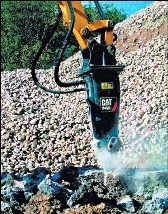Polyurethane rubber

Polyurethane rubber is made of polyester (or polyether) and diisocyanate lipid compounds polymerization, according to the different raw materials used, can be divided into polyester polyurethane rubber (AU) and polyether polyurethane rubber (EU) two categories. Its chemical structure is more complex than the general elastic polymer, in addition to the recurring carbamate group, the molecular chain often contains ester, ether, aromatic groups. The main chain of UR molecule is composed of flexible and rigid chain segments. Flexible chain segment is also called soft chain segment, composed of oligomer polyols (such as polyester, polyether, polybutadiene, etc.); Rigid chain segment, also known as hard chain segment, is composed of the reaction products of diisocyanate (such as TDI, MDI, etc.) and small molecule chain extender (such as diamine and diol, etc.). The proportion of soft chain segment is more than that of hard chain segment. The polarity of soft and hard chain segments is different. The polarity of hard chain segments is stronger, and it is easy to gather together, forming many micro-differentiated parts in the soft chain segment phase, which is called microphase separation structure. Its physical and mechanical properties are closely related to the degree of microphase separation.
Temperature range: -40℃ ~ 100℃, short time up to 120℃
Advantages:
· Good mechanical properties
· Excellent wear resistance
· Good oil resistance
· Good air tightness
· Good resistance to oxygen, ozone and ultraviolet radiation
· Good cold resistance
· High pressure and wear-resistant seals, such as hydraulic cylinder seals
Disadvantages:
· Poor water resistance, acid and alkaline resistance
· Intolerance to high temperature
Applicable media:
· Pure aliphatic hydrocarbon (propane, butane)
· Mineral oil and ester
· Silicone oil and silicone ester
· Water resistance: 50℃
Unsuitable medium
· Ketone, ester, ether, alcohol
· Hot water, water vapor, alkali, amine, acid


